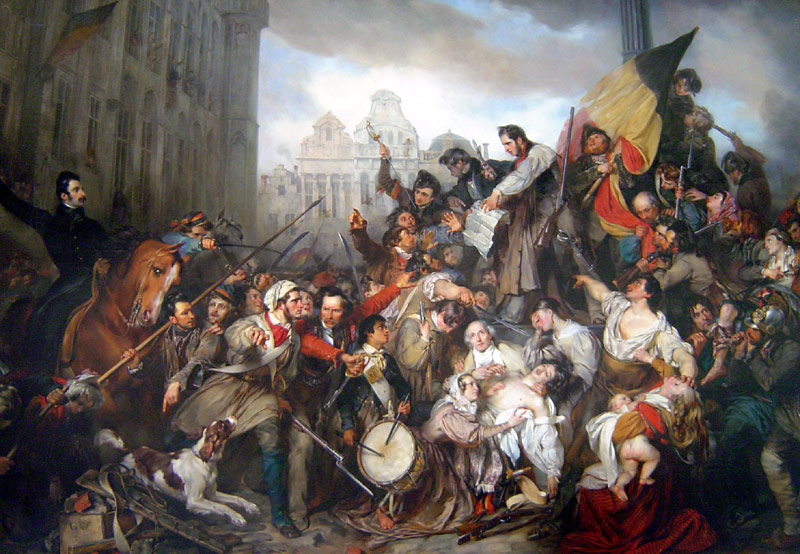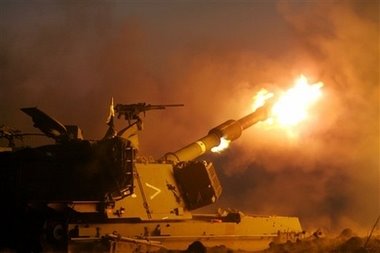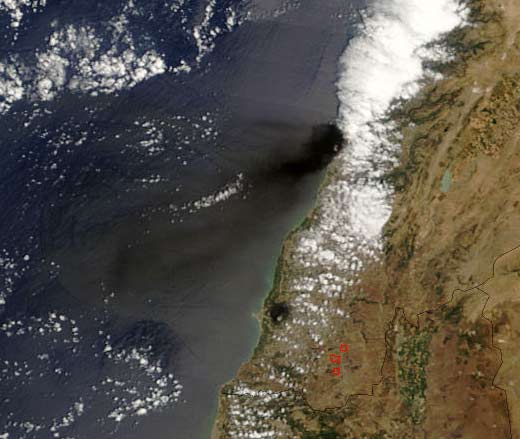Actually Belgian Independence Day should be October 4th, since on October 4th, 1830, Independence was formally declared by the provisional government (known as Voorlopig Bewind in Flemish and Gouvernment Provisoire in French).
However, since Europe at the time was still trying to find out if a monarchy wasn't such a bad state form after all - Europes first experiment with a republic, France, had caused quite some headaches - these provisional rulers opted for a Constitutional Monarchy. Only problem: they couldn't find a King yet. Only one year later, on July 21, 1831, Leopold of Saxe-Cobourg, shipped over from England, would be crowned King of the Belgians in Brussels. And thus, even though at his accession to the throne his country was already 10 months old, the day he assumed control as Leopold I would become Belgian National Holiday.
I wish I could provide some more info on these early days and the events that led to Belgian Independence. Unfortunately, I'm rather short on time. So I'll try to keep it brief and to the point.
In 1815 Napoleon was beaten at Waterloo. At the Congress of Vienna the then European superpowers had already decided (before the actual battle) to amalgamate the Low Countries - what is now known as Holland, Belgium and Luxembourg - in the Dutch Kingdom under Willem I of Oranje (the Dutch Royals are from the House of Oranje/Nassau, wherein Orange is a place in France where they were once exiled and Nassau is a place in Germany where the very first Willem, known in Anglosaxon countries as William the Silent, was from).

For 15 years, from 1815 to 1830, a Dutch King was thus ruling over Flemings and Walloons (as well as over the Luxembourgers). And here's the thing. Willem was some kind of Enlightened Despot, but the fact that he never gave the "Belgians" equal rights, granted no press freedom, and introduced a couple of nasty, authoritarian measures made that he never "ticked" in the southern part of his Kingdom. Add to that the general animosity among the Walloons, who at the time possessed way more industrial backbone than the Dutch themselves, plus the fact that they had to accept Dutch as official language - the horror - and you have the ingredients of an uprising. It came on August 25, 1830, after riots broke out in Brussels at the end of a popular Royal Theater play called "La muette de Portici". Although the Orange-true Civil Guard managed briefly to restore some order, word got out, and riots ensued, in other places such as Liège, Verviers, Huy, Namur, Mons and Leuven. To try to cool down the situation, King Willem sent one son, Crown Prince Willem, to Brussels to negotiate. However, he also sent a second son, Frederik, Commander of the Royal Army, with a force of 6,000 to Vilvoorde, a place 10 kloms north of Brussels. The latter act was generally seen as a provocation by the protesters. As the tensions grew, the soon-to-be Belgians got reinforcements from Liège and free corps were raised.
By the 23rd of September King Willem had had enough and he ordered Frederik with his army, in the meantime 12,000 strong, into Brussels to show who was boss. The free corps were able to canalize the anger of the masses - who suffered from high unemployment - towards the royal troops, and a genuine battle unfolded in the heart of Brussels, the Warande Park. If you ever visit Brussels, that's the park right between the Royal Palace and Parliament (and if you ever fly over the center of Brussels, you will notice there's a gigantic freemason compass in the park, a legacy of the Austrian architect Bartholomeus Zinner). Anyway, for four days the battle raged in and around the park. The "Dutch" had cannons, but the "Belgians" threw anything they could lay their hands on from the rooftops. Musket fire was everywhere, and soon there were hundreds of dead and wounded on both sides. The beautiful painting by Gustaaf Wappers, see above, is a romanticized depiction of the death of a "Belgian" and the general uproar during those hectic days (it is a painting much in line with the Delacroix painting of the French Revolution. You know what I'm talking about - the painting with the stout woman with the gun and the bare knockers). In the night of September 26 to 27, the Royal Army had had enough and it left Brussels, marching back to Vilvoorde. During the fight, a provisonal government had formed - the Voorlopig Bewind/Gouvernement Provisoire - comprising a.o. strong characters such as Louis de Potter, from Brugge, and Charles Rogier, from Liège. Belgium's "Founding Fathers" are on the drawing below, a popular period litho. On October 4th, this Provisional Government declared Belgian Independence. Quite remarkable, already on November 10 elections were held, resulting in a National Congress, which formalized the independence of the new little state from the North Sea to the Ardennes. The search for a King could begin.

MFBB.
 Before you all think MFBB has become a sissy, no, nee, non, nein and njet! I'm all for blasting Hizballah to kingdom come and reducing that fuckface Nasrallah to a smoldering heap of fat and bones. And if that's not clear enough, I AM in favor of disproportionate response. They kill an IDF soldier, kill 100 of 'em lousybeard good-for-nothing dumb-as-a-backdoor fanatical Quran-thumping A-holes. But not in this way. Close to 200 dead in Lebanon, and the (overwhelming) majority of them simple Lebanese citizens? NOT good, imho. I can't fail but notice the difference between the USAF going out of their way to avoid civilian casualties when conducting bombing operations in Iraq and/or Afghanistan, and apologizing at length and offering "blood-money" after the (sadly, inevitable) collateral damage does occur, and the IAF blasting half Beirut to smithereens without (from my POV at last) critically hurting Hizballah.
Before you all think MFBB has become a sissy, no, nee, non, nein and njet! I'm all for blasting Hizballah to kingdom come and reducing that fuckface Nasrallah to a smoldering heap of fat and bones. And if that's not clear enough, I AM in favor of disproportionate response. They kill an IDF soldier, kill 100 of 'em lousybeard good-for-nothing dumb-as-a-backdoor fanatical Quran-thumping A-holes. But not in this way. Close to 200 dead in Lebanon, and the (overwhelming) majority of them simple Lebanese citizens? NOT good, imho. I can't fail but notice the difference between the USAF going out of their way to avoid civilian casualties when conducting bombing operations in Iraq and/or Afghanistan, and apologizing at length and offering "blood-money" after the (sadly, inevitable) collateral damage does occur, and the IAF blasting half Beirut to smithereens without (from my POV at last) critically hurting Hizballah. Consider the satellite photo of Lebanon to the left, taken this weekend by NASA's
Consider the satellite photo of Lebanon to the left, taken this weekend by NASA's  Again, before accusing me of talking like a softy, don't forget it wouldn't be the first time Israel acts like a trigger-happy Rambo on steroids. In the 1967 Six-Day War the American Naval Monitoring ship
Again, before accusing me of talking like a softy, don't forget it wouldn't be the first time Israel acts like a trigger-happy Rambo on steroids. In the 1967 Six-Day War the American Naval Monitoring ship